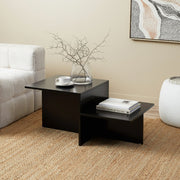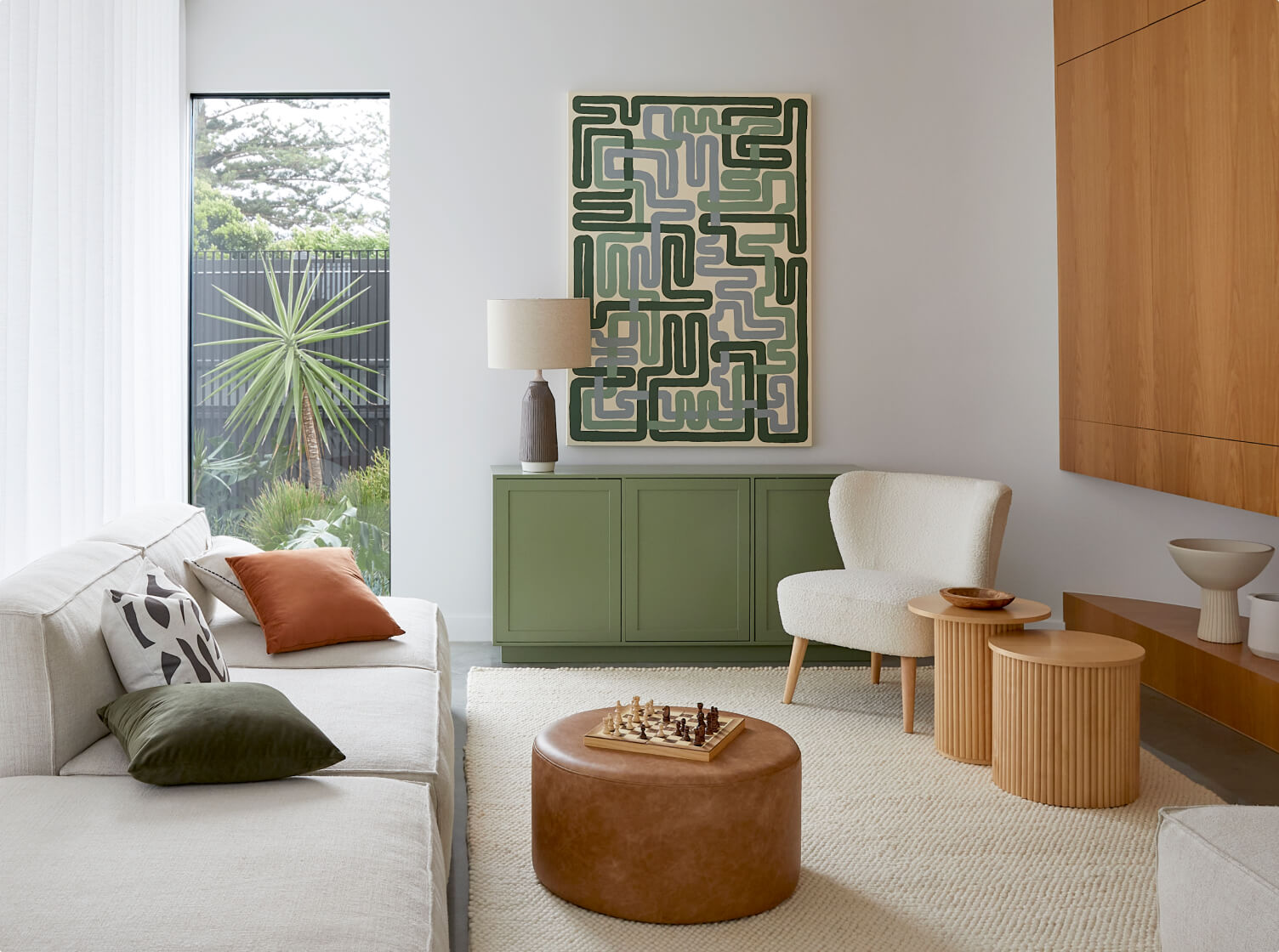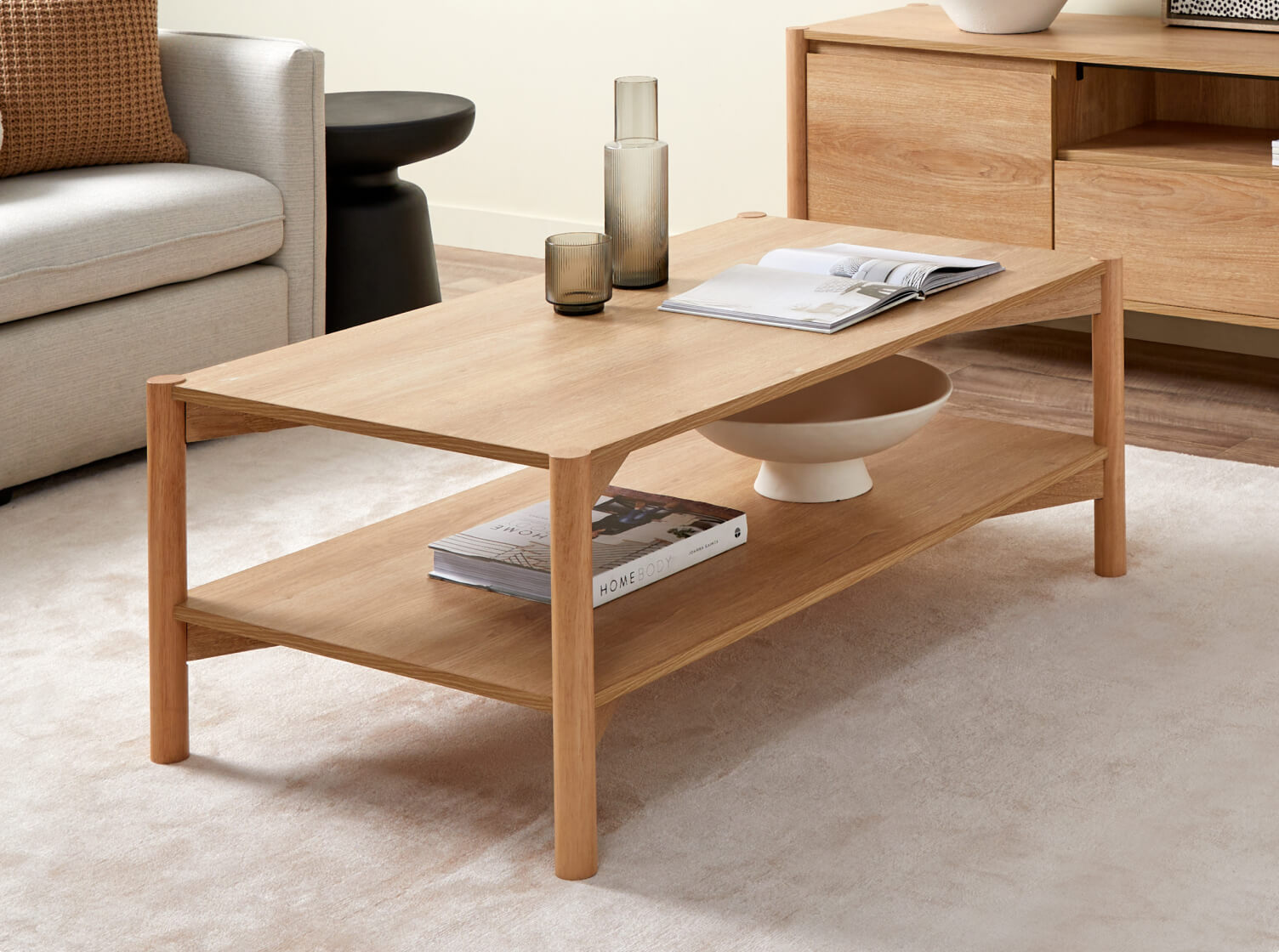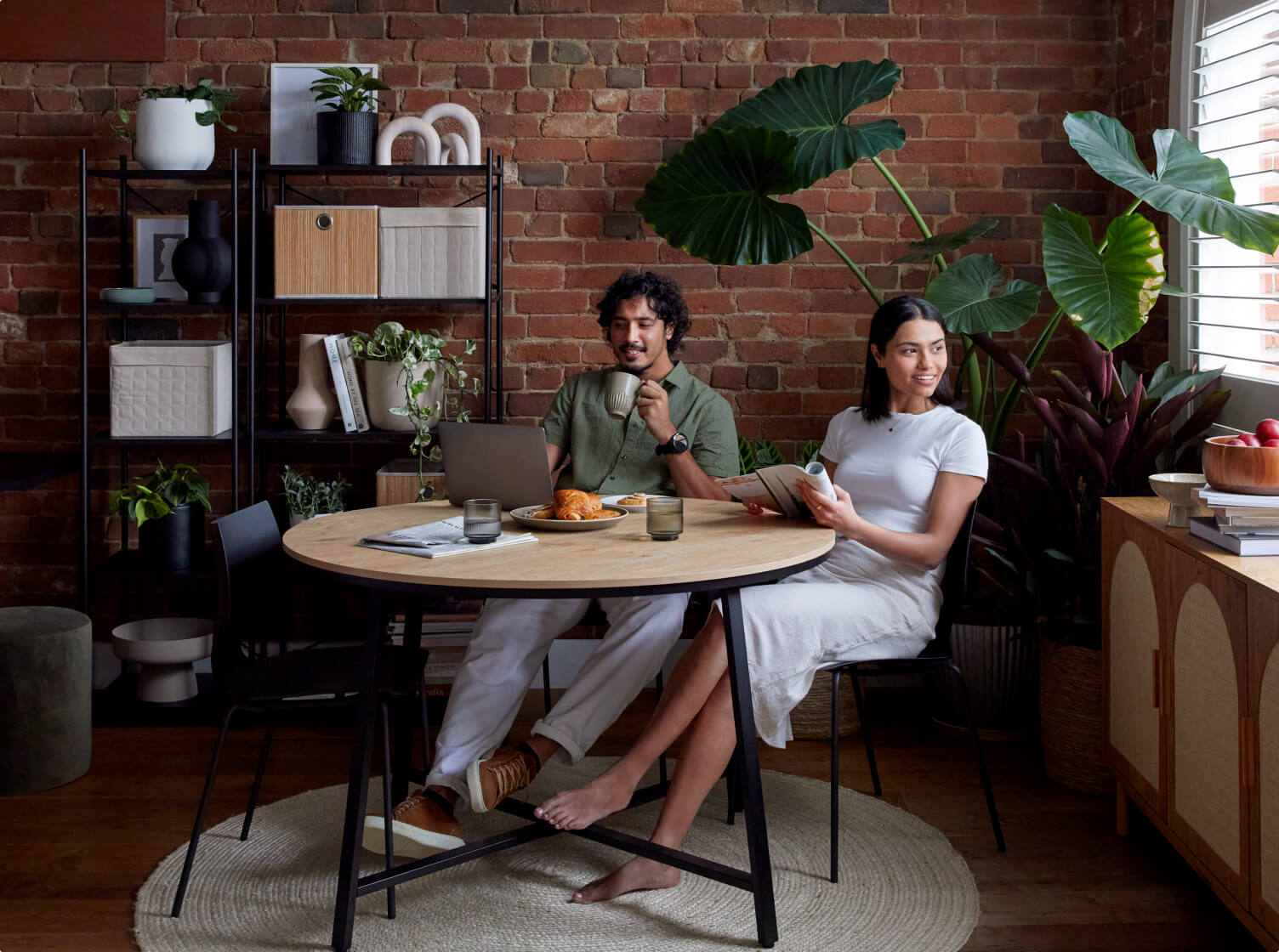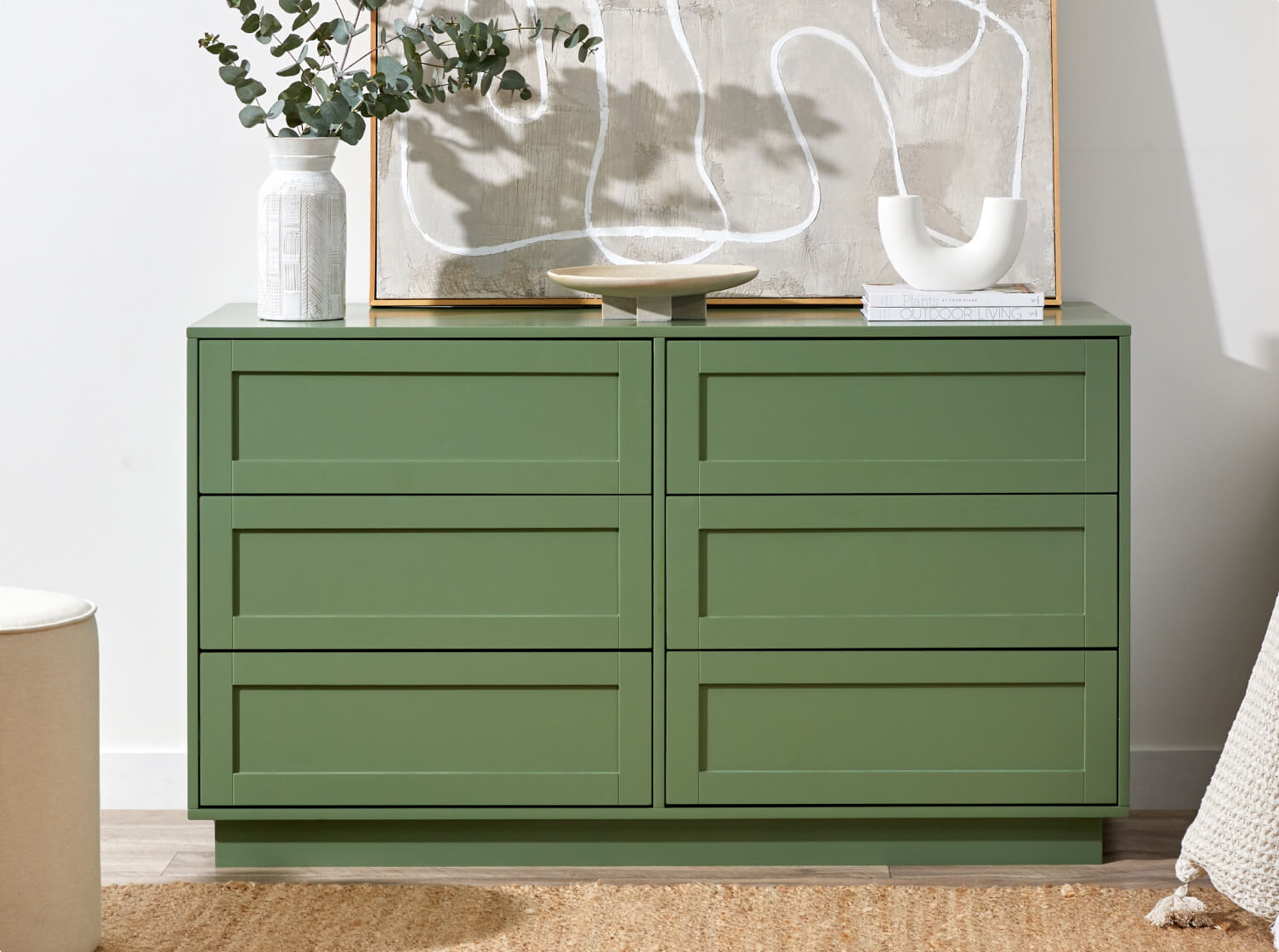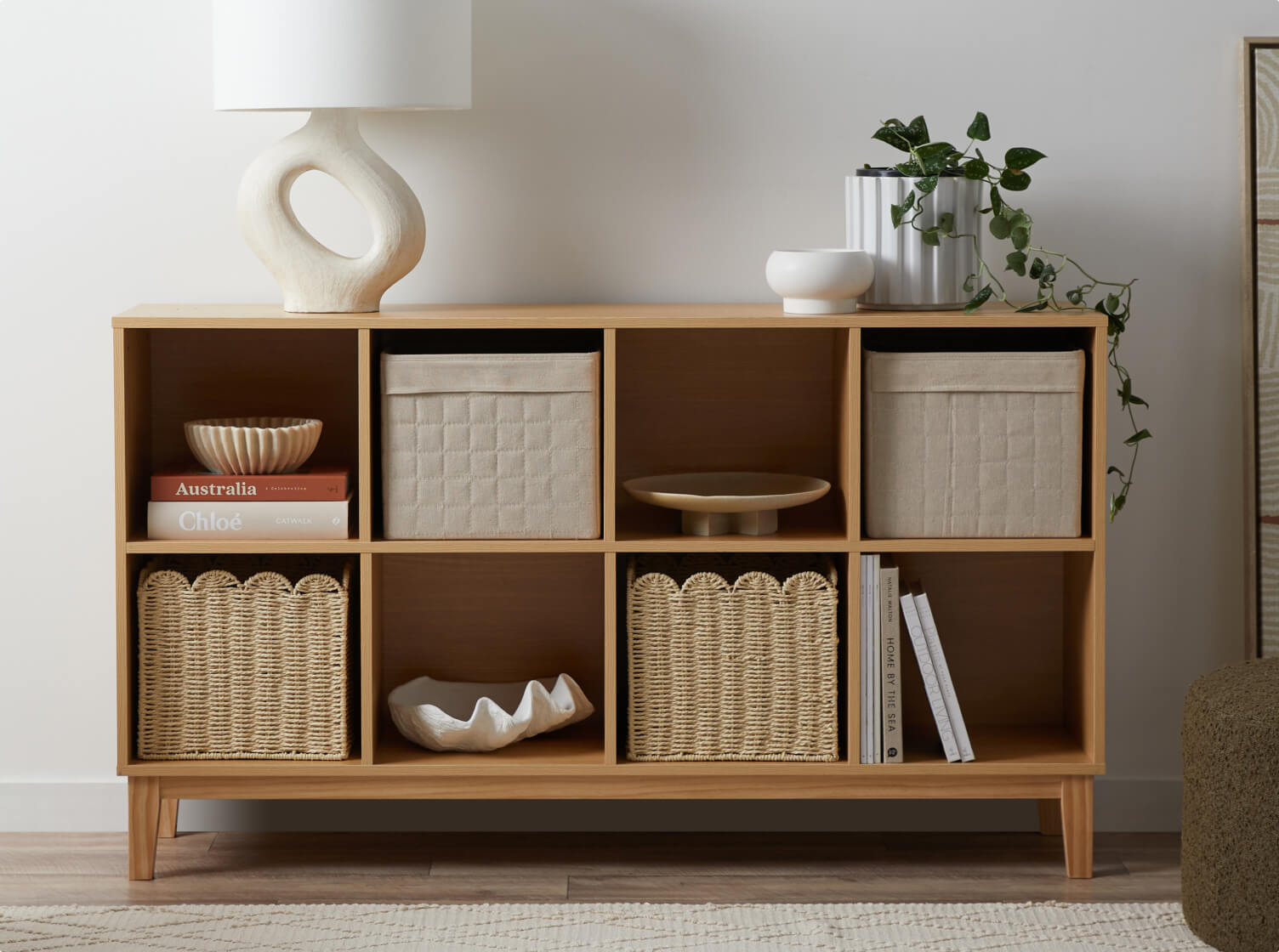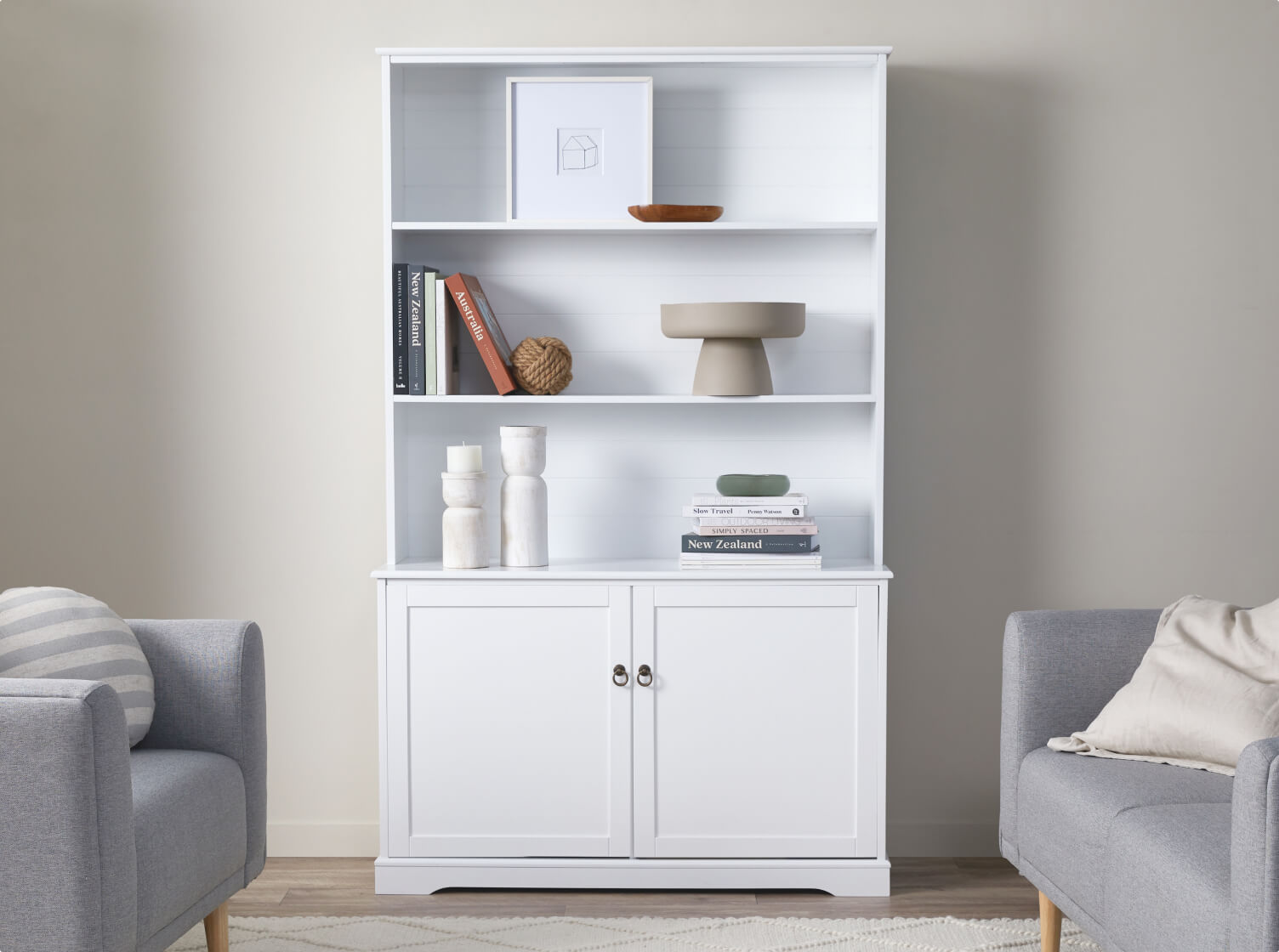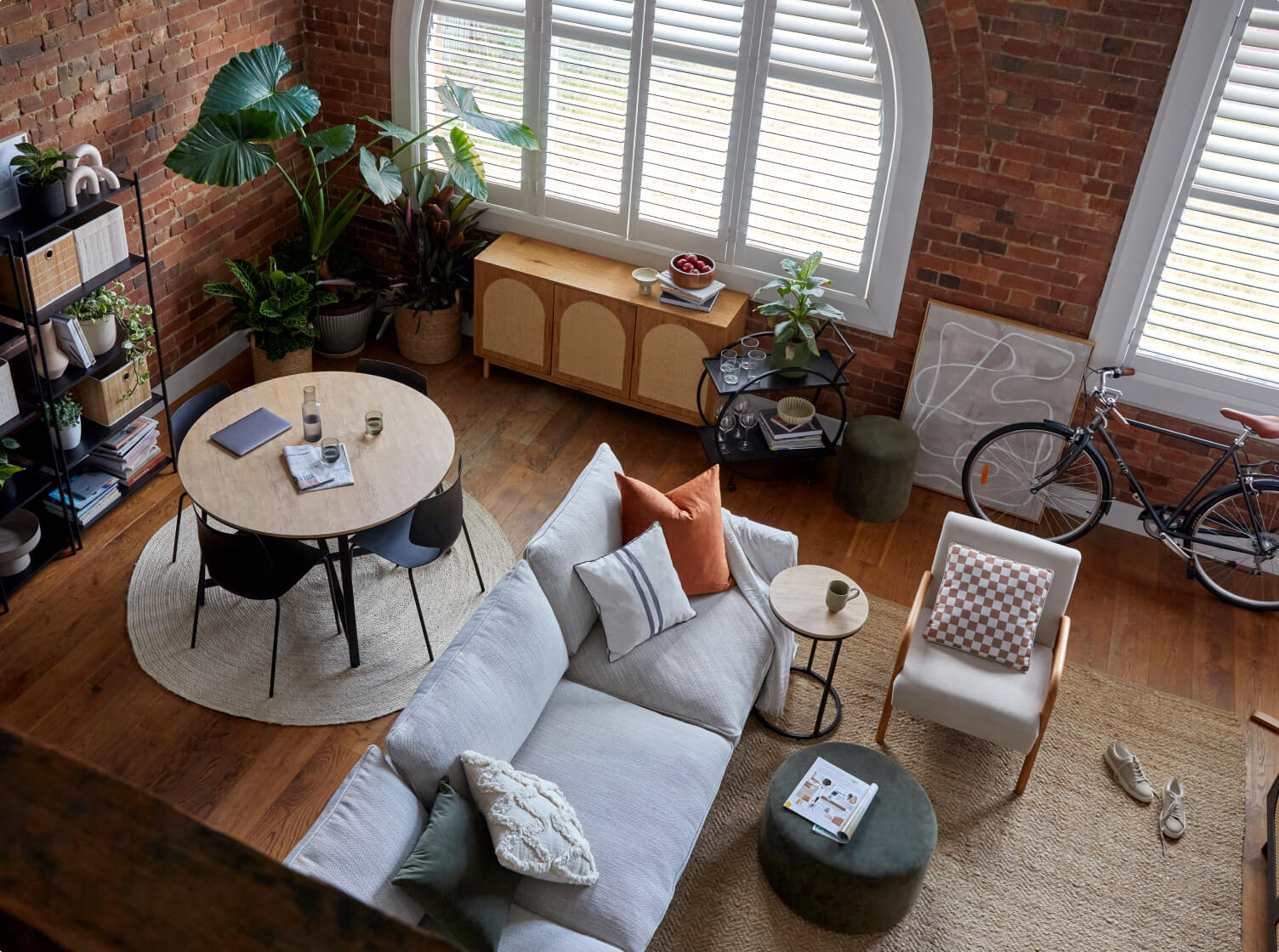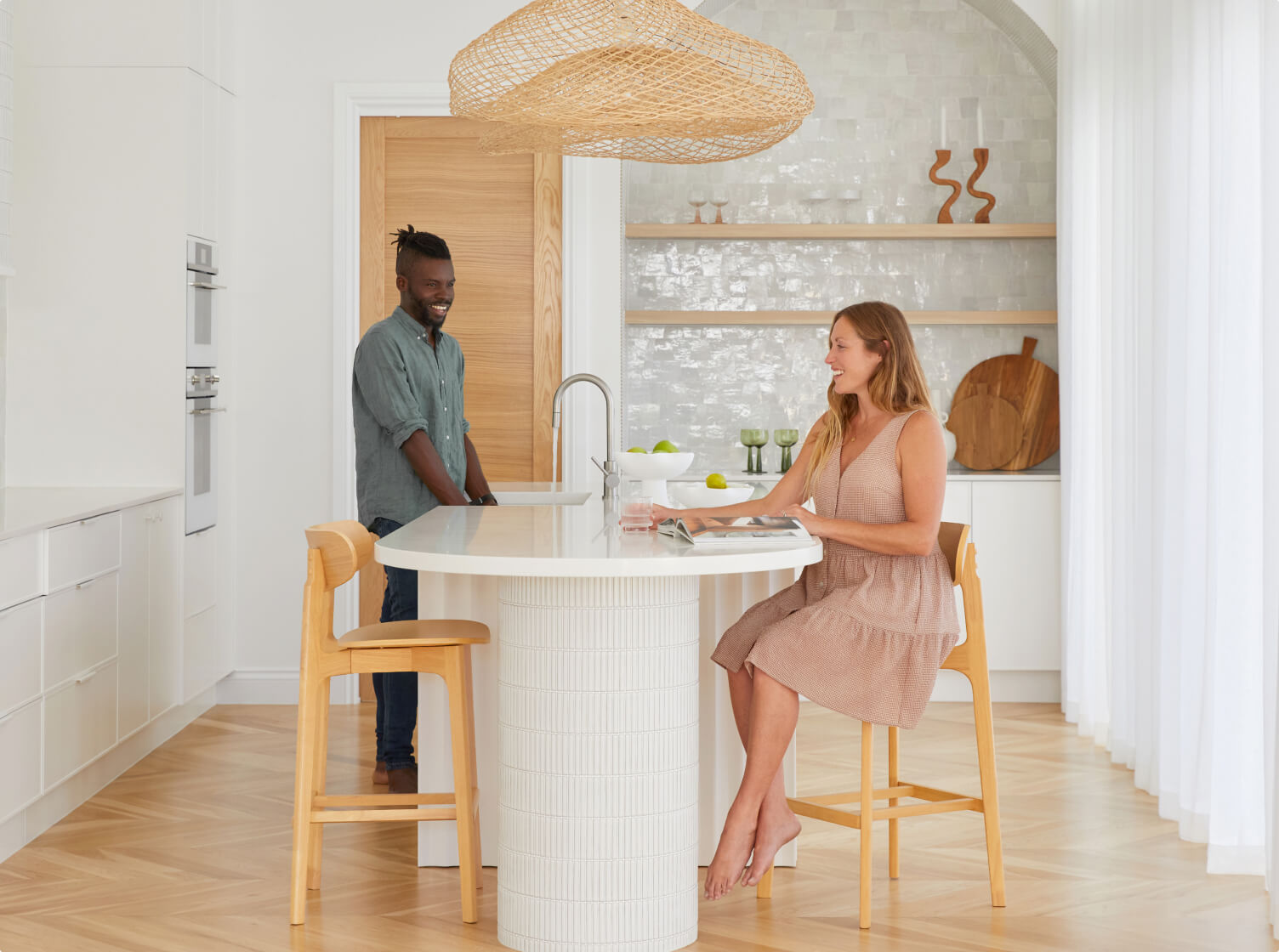Up to 40% Off* selected styles
27th March 2025
Small Space Mastery: Japandi Solutions
Japandi is a fantastic style to adopt to make your small spaces feel warm and welcoming. This blend of Japanese minimalism and Scandinavian warmth is perfect for stylish compact living.
In this article, we’ll explore the fundamentals of this style and how you can apply it in the home.
Space Optimisation Principles
Mocka’s Minato range is a perfect example of Japandi design, with its natural colours and textures. The texturing and colours lean perfectly into a Japandi style.
You can also put this furniture range to multiple uses. For example, the buffet could double as a neat storage space for all manner of things. The entertainment unit offers similar functionality while also offering a Japandi-centric centrepiece to your living room.
For extra small spaces, make use of Sofa Beds or extendable tables to maximise room even more.
But it’s not just about the practical use of space, it’s about the creation of visual space as well. The first step is not to overclutter with decor, but to keep the room open and airy. Low-profile furniture (such as the above entertainment unit) also goes a long way to creating that visual space.
Open, low-profile shelving like the Tove shelf unit can also help amplify the space, as well as offer a place for storage baskets if you need additional storage space.
Furniture Selection Guide
When choosing Japandi-themed furniture for your home, the first step is to physically measure the space you have available. It’s very easy to misjudge whether something will fit in a home, and having the concrete measurements at hand will help.
Most furniture will specify dimensions so you can know instantly, without the guesswork, whether something will fit in your space.
Next, look for furniture that fits the Japandi style. You want natural woods, bamboo, light colours and even white. A key aspect of the style is texture, however. So make sure the furniture you choose adds the right amount of texture to the room.
You’ll also want to visualise your space with the furniture pieces you select. Will you be able to move freely around the space? Will it look cohesive and welcoming, or cramped and dark? This visualisation can further help in selecting the right furniture on the first time of asking.
Finally, will your other needs be met, such as storage, with the selection of furniture you’re after? Another key aspect of Japandi is minimalism, so any sort of clutter is a no-go.
Once you have your ideal setup in place, complement the style with decor in neutral tones, clean lines, and natural materials.
Storage Solutions
In order to maintain any minimalist style, you’ll likely face storage concerns at some point. The first and easiest solution is to donate what you don’t need to a local charity, or even sell off the things that no longer have a place in your home.
In case you have sentimental items or things you use daily that you’d like to store out of sight, you can use the aforementioned entertainment unit or buffet. The Maeve Buffet is another example of a great storage unit that fits in with Japandi.
You’ll also want to utilise your vertical space as much as possible. Tall shelving coupled with storage baskets can give you ample space without impacting the flow of your room too much. Floating shelves are also a good option.
Hidden storage can also go a long way, such as lift-up coffee tables or storage beds.
Once you have some options here, you’ll want to create and maintain an organisational system, so you know where to find things when you need them. The golden rule, which you’ve likely heard before, is a place for everything and everything in its place.
Light and Color Strategy
Light makes a big difference to a space, and colour helps to add more light to your home. Lighter colours - especially white - reflect more light and can leave a space feeling brighter, more welcoming, and larger than it really is.
Mirrors are another great way to manage the light in a space. A strategically placed mirror can reflect light into the right places, ensuring an even distribution. They also help to add depth to a room.
Finally, layering textures and materials adds an extra dimension and the illusion of greater depth to small spaces. So keep this in mind while selecting furniture, and amplify the effect with minimal decor.
Room-Specific Solutions
Compact Living Areas
If you’re furnishing a small living area, make the most of your space by selecting slim-profile seating, offering a comfortable area without taking up too much space. Nesting furniture can also help, being available when needed and storing out of sight easily when not.
A great example of this is the Arc nesting tables, easily stored in smaller spaces.
Small Bedrooms
For small bedrooms, there are a variety of functional solutions to save space. Bunk beds, for example. Under-bed storage is another. Low-profile bedside tables, such as the Inca, can offer additional storage and texture without compromising space too much.
Additionally, you could opt for wall shelving as a stand-in for bedside tables, further maximising space.
Home Office
To create a practical tiny home office, utilise fold-away desks, vertical storage, and collapsable seating to quickly transform the room according to your needs.
You could also repurpose another part of the home, such as the dining area, to serve as an office during daytime hours, which leads us into multi-functional spaces.
Multi-Functional Spaces
Apart from the office, most spaces can transform according to your needs in the moment. Sofa beds can offer a place to both sleep and sit, according to the situation. Room dividers can separate spaces during the day and combine them at night.
This can also help to create a healthy work-life balance. Separating your office space from the rest of the home during working hours can help you more effectively “switch off” after your day is done.
Finally, your entertainment area can double as a mini dining room if the need arises. Make use of foldable chairs and extendable tables or even lap trays to accommodate meals in your entertainment space.
Decluttering Systems
Decluttering your home is only the start of the battle. Keeping the home free of clutter requires a healthy dose of mindful management.
It’s relatively easy to set aside just a few minutes a day for decluttering your home. This can go a long way to keeping the space organised and neat. You might even want to set up a quick checklist on a weekly or monthly basis to ensure that everything remains in place and neatly stored away.
Clutter is quick to creep up on us, and a little diligence goes a long way.
Styling for Small Spaces
When styling your space - adding those finishing touches - it’s important to once again be mindful of the available room. Use just a few statement pieces to really amplify the style you’re going for while avoiding clutter.
Use wide open spaces, such as walls, for impactful decor that adds to the feel of the room without adding clutter. Artwork, rugs, or even accent walls can make for compelling focal pieces that make a space feel elegant despite the size.
As you pick out the decor, make sure to keep harmony in mind, a core aspect of the Japandi style. Colours need to flow together and complement each other. Clashing decor can very quickly impact the overall feel and style of a room.
Finally, make sure that none of the decor is too large for the room. Something as simple as an overlarge painting can already make the space feel more cluttered and full.
Japandi: Minimalism Meets Practicality
To cap it off, remember that your Japandi space should offer warmth, clean lines, natural tones, and most of all, practicality. Choose functional furniture that can serve a practical purpose while also adding to the feel of the room.
There are many different options out there, and once you understand the Japandi style, it’s easy to pick out what would work best for the room at hand.
Frequently Asked Questions (FAQ)
What makes Japandi ideal for small spaces?
It’s Japandi’s minimalist approach, mostly, but also its strong focus on practicality. Every piece must serve a purpose, so it avoids clutter in two ways. The lighter colours and natural tones also maximise visual space while brightening up the room.
How do I choose the right Japandi-style furniture for my apartment?
Look for furniture with clean lines and natural tones. Texture can also make a big difference and lean into the Japandi style. Each piece must serve a practical purpose, offering a stylish, multi-functional space.
What are some space-saving storage hacks in Japandi design?
Use vertical shelving, hidden storage compartments, and modular furniture to optimise storage while keeping the space uncluttered. Woven storage baskets can also help to add additional storage space while also complementing the visual style.
